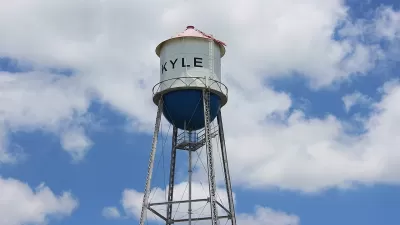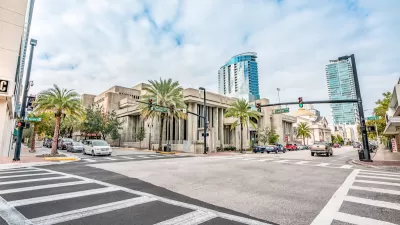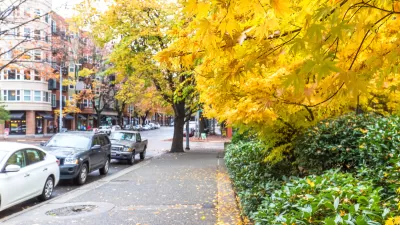Grist's David Roberts maps out why his neighborhood is not walkable and how it could be greatly improved with just a little extra infrastructural connectivity.
"As you can see it's a fairly discrete area, bounded on four sides by busy arterials. Inside those arterials, there's no reason you couldn't have a thriving community. It already has a decent walkability score. There are a couple of parks; Greenwood boasts several restaurants and cafes; Aurora has an array of big box retailers; there's a great supermarket just a few blocks north of 145th. There are more people coming in, too, as a series of condos are built along Linden.
But despite all the ingredients ... there is no such community. The first and primal cause is that there are no %*#! sidewalks. (You hear me Mayor McGinn? Show me what the new guy can do!) But I think the problems run deeper. Look closely at the map and you'll note that the development pattern is almost aggressively misanthropic. Everyone is isolated from everyone else."
With streets that end just short of linking and few sidewalks, walking around and through the Bitter Lake neighborhood in Seattle is a challenge. Roberts offers a vision of how the street grid could be improved.
FULL STORY: Making my neighborhood more walkable, sociable, sustainable, and safe

Maui's Vacation Rental Debate Turns Ugly
Verbal attacks, misinformation campaigns and fistfights plague a high-stakes debate to convert thousands of vacation rentals into long-term housing.

Planetizen Federal Action Tracker
A weekly monitor of how Trump’s orders and actions are impacting planners and planning in America.

In Urban Planning, AI Prompting Could be the New Design Thinking
Creativity has long been key to great urban design. What if we see AI as our new creative partner?

Cal Fire Chatbot Fails to Answer Basic Questions
An AI chatbot designed to provide information about wildfires can’t answer questions about evacuation orders, among other problems.

What Happens if Trump Kills Section 8?
The Trump admin aims to slash federal rental aid by nearly half and shift distribution to states. Experts warn this could spike homelessness and destabilize communities nationwide.

Sean Duffy Targets Rainbow Crosswalks in Road Safety Efforts
Despite evidence that colorful crosswalks actually improve intersection safety — and the lack of almost any crosswalks at all on the nation’s most dangerous arterial roads — U.S. Transportation Secretary Duffy is calling on states to remove them.
Urban Design for Planners 1: Software Tools
This six-course series explores essential urban design concepts using open source software and equips planners with the tools they need to participate fully in the urban design process.
Planning for Universal Design
Learn the tools for implementing Universal Design in planning regulations.
Appalachian Highlands Housing Partners
Gallatin County Department of Planning & Community Development
Heyer Gruel & Associates PA
Mpact (founded as Rail~Volution)
City of Camden Redevelopment Agency
City of Astoria
City of Portland
City of Laramie





























